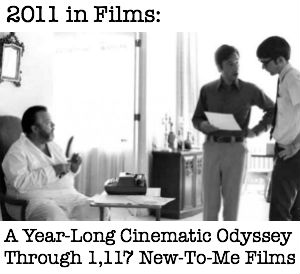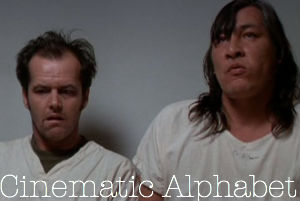Female Filmmaker Friday: Losing Ground, 1982 (dir. Kathleen Collins)
I decided for the month of January I’m going to stay in the 1980s for Female Filmmaker Friday, and since this film will be airing on TCM next Monday (1/21/19), I thought now would be the perfect time to look at Kathleen Collins’s groundbreaking independent feature Losing Ground. You can buy this film on DVD or Blu-ray (and I recommend purchasing directly from Milestone Film’s site so you can support their amazing work), which includes a bunch of special features, including her first film The Cruz Brothers and Miss Malloy (which I still need to see!). I first saw Losing Ground in 2015 during A Year With Women when it was aired as part of TCM’s inaugural Trailblazing Women spotlight. It has since become one of my favorite films.

Much of the rediscovery and restoration of this film is due to the tireless work of her daughter Nina Lorez Collins, who kept much of her mother’s legacy and has worked with Milestone to restore her mother’s films and HarperCollins to bring her lost short stories to print as Whatever Happened To Interracial Love?. Kathleen Collins died of cancer in 1988, at the age of 46. At the time of her death she was well-regarded in certain circles, but her contributions to the cultural history were largely overlooked. Losing Ground had its first screening June 1982 at Irvington, NY’s Town Hall Theatre and its only screening in New York City proper was on January 24, 1983, as part of the Museum of Modern Art’s Cineprobe series. Thankfully 16mm copies of both of her films were preserved at Indiana University’s Black Film Archive.

The film follows philosophy professor Sara Rogers (Seret Scott) as she and her artist husband Victor (Bill Gunn) work through marital difficulties during a holiday in Upstate New York. Although she had a sizable role in Louis Malle’s Pretty Baby (’78), Scott mostly found work in theater and was a friend of Collins before being cast in the lead role. In 1980 Collins had said, “Hollywood is the one mythical world that America created. The gods and goddesses of America are film stars . . . and we don’t know who we are in that mythology.” With her two films, Collins attempted to right this wrong and add ordinary black women and men back into the narrative. I found re-watching this film particularly rewarding after reading her book of short stories. You really see the world in which Collins lived and the world in which she wanted others to see.

Sara’s artist husband Victor is played by Bill Gunn, who was an independent filmmaker in his own right having released Ganja & Hess in 1973 (it screened at the Cannes Film Festival that year). While Sara is very cerebral, Victor is all sensuality. This dynamic makes for extreme chemistry between the two characters, as well provides tension as the story progresses.

I love Gunn in this role. Much like Omar Sharif’s performance as poet Yuri Zhivago in David Lean’s Doctor Zhivago, we can see through Gunn’s facial expressions the way he looks at the world as one giant piece of art. Every movement is filled with emotions. It’s a stunning performance.

Collins shoots them together in ways that always heightens the tension of their marriage. Sara is always serene and cerebral, Victor is always wild and emotional. The film was shot by Ronald K. Gray, who had a profound impact on Collins as an artist, and particularly as a filmmaker. Collins had said, “Ronald is probably more responsible for my becoming a filmmaker than anybody. He was a student of mine at City College and he would get angry at me for all the work I did on other people’s films, saying that if we just got a little bit of money we could make a movie.” Gray also edited both of her films. His only other major film credit is Ayoka Chenzira’s Alma’s Rainbow from 1994. Chenzira’s 1984 short film Hair Piece: A Film for Nappyheaded People was just added to the Library of Congress’s National Film Archive.

Victor’s painting were actually made by Robert E. Kane and George Norris. I couldn’t find any information about them, but I do love the works the created for this film.

After a big sale, Victor suggests he and Sara go on a relaxing trip to Upstate New York. This seems like a good idea, until Victor falls for a local girl named Celia (Maritza Rivera), whom he claims he is just interested in painting, but Sara (and the audience) knows this is not the case.

Meanwhile, Sara agrees to appear in a short film produced by one of her students – a retelling of Frankie and Johnny through dance. Her partner is none other than Duane Jones, best know for his starring role in Night of The Living Dead (though he also appeared in Ganga & Hess!). Jones is suave in this role without ever crossing the line into anything inappropriate. It serves as a nice counterbalance to Victor’s inability to keep his passion in check within professional circumstances. In the press notes for the film, Collin’s daughter Nina says both Duane Jones and were gay, though I can’t seem to find anything to back up that assertion.

I particularly love this sequence with Sara. She’s playing a part, but through the examination of this character she starts to see her own life differently. In an interview with David Nicholson, that appeared in the Winter 1988/89 issue of Black Film Review, Collins said:
“If I favor anything, I probably always favor the internal resolution before the external resolution. Because for me the internal resolution is the most potent in the psyche… You don’t get the resolution, but you get the explosive moment… the final resolution is private choice, even of a character. It’s really none of my business. All I do is take the character to the point where I can see him through the dilemma to the dilemma’s climactic moment. After that, it’s free choice. And not everyone will choose the redemptive path.”
You really see this play out in Sara’s journey throughout this film as she comes to terms with her own place in the world, as well as her place within her marriage.

I also have to give a shout out to two of my favorite smaller roles in this film. Billie Allen plays Sara’s mother and she has a couple of really powerful scenes in the film. One scene is quite comical between her and Victor and the other, more profound as she attempts to impart some advice to her daughter. Pointedly, both scenes happen during dinner. The dinner table is a gathering place, where one comes from nourishment, both in the form of food, and in camaraderie.

Zachary Minor is luminous as one of Sara’s students early on in the film. This appears to be his only credit on IMDb (where he listed as Zachary Minar), but Minor would go to use his theater training to teach the skit-based “Life Skills” program which is part of the NFL’s Rookie Symposium. You can watch a great interview with Minor talking about the program here.

Losing Ground was made on a budget of $125,000 (which must have been a godsend, compared to the $5,000 budget of her first film) and filmed largely in Nyack, Piermont and Haverstraw in Rockland County, New York. This Upstate setting adds a brightness to the film that I think would be lacking had it mostly film in the city proper.

As Sara begins to lose patience with her husband’s extra-marital activities, we get one of the great cinematic burns of all time: “Don’t you take your dick out like it was artistic, like it was some goddamn paintbrush!” In an interview with James Briggs Murray in Black Visions, Collins said:
“Essentially it’s that change is a rather volatile process in the human psyche; and, that real change usually requires some release of fantasy energy. This is why it has an element of violence.”
With the final shot Losing Ground, we see a very different Sara from the woman we saw at the start of the film. Using the story of Frankie and Johnny to frame their decaying marriage is a brilliant way to allow viewers to make their own conclusions as to whether Sara and Victor’s relationship weather this storm. To this day Losing Ground remains a landmark of Black cinema in America, and should be viewed far and wide.
Posted on January 18, 2019, in Female Filmmaker Friday and tagged 1982, Ayoka Chenzira, Bill Gunn, Billie Allen, Duane Jones, Female Filmmaker Friday, Kathleen Collins, Losing Ground, Maritza Rivera, Seret Scott. Bookmark the permalink. Leave a comment.

















Leave a comment
Comments 0